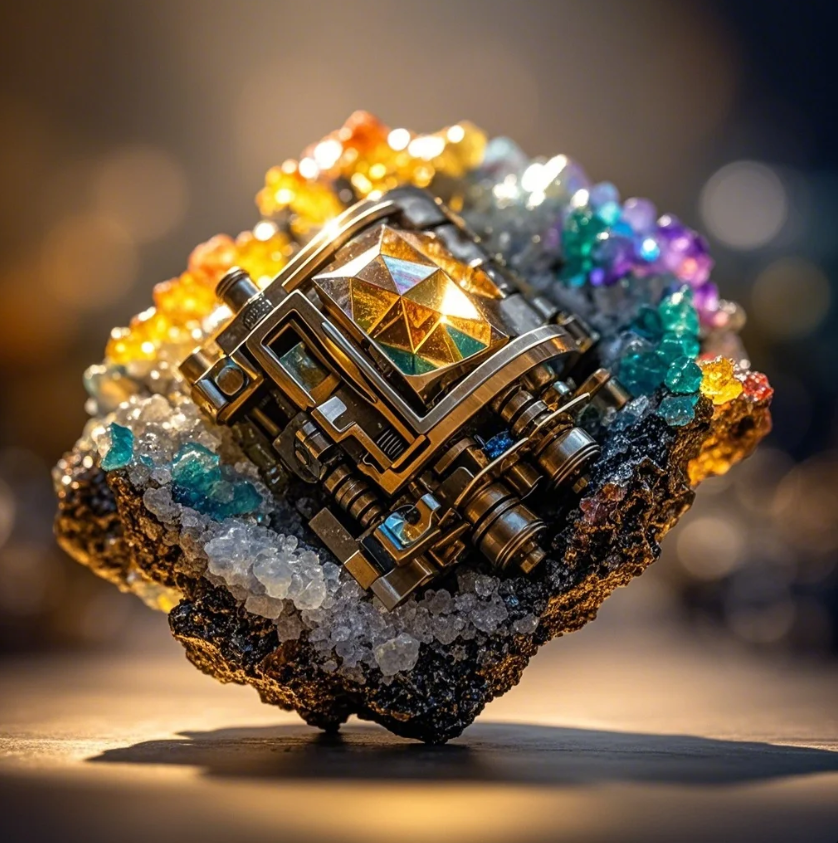What Are the 7 Major Groups of Minerals?

Minerals are essential elements of Earth’s crust, found in a wide range of compositions. Knowing the groups they belong to helps understand their diverse uses in industries.
Snippet paragraph: Minerals are classified into major groups based on their chemical composition and properties. This classification is essential for various industrial applications.
Transition paragraph: Let’s explore the seven major groups of minerals and how each plays a crucial role in everyday life.
What Are the 7 Major Classes of Minerals?

Minerals are categorized into different classes based on their chemical composition. The seven major classes are:
- Silicates: The most abundant group, including minerals like quartz and feldspar.
- Oxides: Composed of metals combined with oxygen, like hematite and magnetite.
- Sulfides: Made up of sulfur combined with metals, such as pyrite.
- Carbonates: Contain carbon, oxygen, and a metal, such as calcite.
- Halides: Composed of halogen elements, such as fluorite.
- Sulfates: Contain sulfur and oxygen, like gypsum.
- Native Elements: Made of a single element, such as gold or copper.
These classes are identified based on their chemical structures, and each has unique properties that make them useful in various industries.
Dive Deeper: Silicates and Oxides
Silicates are the most prevalent minerals on Earth, making up about 90% of the Earth’s crust. The silicon-oxygen tetrahedron forms the basic building block of silicates. These minerals are crucial in the construction and electronics industries. On the other hand, oxides are typically metals combined with oxygen. They are common in ores like iron ore, which is essential for steel production.
| Class | Example | Key Use |
|---|---|---|
| Silicates | Quartz, Feldspar | Used in glass, ceramics, and electronics |
| Oxides | Hematite, Magnetite | Essential in iron and steel production |
What Are the 8 Main Groups of Minerals?

Minerals can be classified into eight main groups, with some variation in classification schemes. The most common ones include:
- Silicates
- Oxides
- Sulfides
- Carbonates
- Halides
- Sulfates
- Native Elements
- Phosphates: Minerals containing phosphate groups, such as apatite.
Each group represents distinct chemical compositions and physical properties, impacting their use in various industries.
Dive Deeper: Phosphates and Halides
Phosphates are essential in agriculture, as phosphate minerals are key ingredients in fertilizers. Halides, on the other hand, are often used in the chemical industry, especially fluorine and chlorine-based compounds.
| Group | Example | Key Use |
|---|---|---|
| Phosphates | Apatite | Vital for fertilizers and animal feed |
| Halides | Fluorite, Halite | Used in the production of chemicals, salt, and even toothpaste |
What Are the 7 Major Minerals?

In the context of major minerals, we are referring to minerals that are essential for human health. These minerals include:
- Calcium: Vital for bones and teeth.
- Phosphorus: Works with calcium for bone health.
- Magnesium: Important for muscle and nerve function.
- Sodium: Helps maintain fluid balance.
- Potassium: Vital for heart function.
- Chloride: Works with sodium to regulate fluid balance.
- Sulfur: Helps with protein synthesis and cellular functions.
These minerals are crucial to maintaining bodily functions and health.
Dive Deeper: The Role of Sodium and Potassium
Sodium and potassium are essential for regulating blood pressure and maintaining fluid balance in the body. The balance between these two minerals is critical for proper cell function, particularly in nerve and muscle cells.
| Mineral | Function | Sources |
|---|---|---|
| Calcium | Bone and teeth health | Dairy, leafy greens |
| Potassium | Heart and muscle function | Bananas, potatoes |
What Are the 7 Common Properties of Minerals?

Minerals share several properties that help identify and classify them. These properties include:
- Hardness: The resistance of a mineral to scratching.
- Color: The mineral’s appearance, although not always reliable.
- Luster: How the mineral reflects light.
- Cleavage: The way a mineral breaks along flat planes.
- Fracture: The breakage that does not follow a plane.
- Density: The mass per unit volume of a mineral.
- Streak: The color of the powdered form of the mineral.
These properties are essential for mineral identification in both natural and industrial applications.
Dive Deeper: Hardness and Streak
The Mohs scale of hardness is commonly used to measure the hardness of minerals, with talc being the softest (1) and diamond being the hardest (10). Streak testing helps identify minerals by showing the true color of the mineral’s powder when rubbed against a porcelain plate.
| Property | Description | Examples |
|---|---|---|
| Hardness | Resistance to scratching | Diamond (10), Talc (1) |
| Streak | Powdered color of the mineral | Hematite (Red), Limonite (Yellow) |
Conclusion
Understanding the different groups of minerals, from their classification to properties, helps us better utilize these essential materials in various industries. Whether you’re in construction, health, or manufacturing, knowing how to identify and use minerals is crucial for success.







